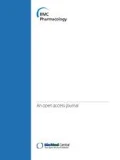P2Y1 receptor antagonists are being developed as antithrombotics. In the vasculature, P2Y1 receptors are not only expressed in platelets, but also in the endothelium where they indirectly mediate vasorelaxation. By blockade of these latter effects, P2Y1 antagonists may cause untoward effects. Here, we investigated whether vascular sympathetic axon terminals also possess P2Y1 receptors by determining [3H]noradrenaline release from superior cervical ganglion neurons in cell culture. ADP inhibited electrically evoked release, but this effect was reverted into facilitation when either P2Y12 receptors were blocked by cangrelor or their signalling cascade was interrupted by pertussis toxin. The facilitation by ADP was also observed with K+ stimulation in the presence of tetrodotoxin, was mimicked by 2-methlythio-ATP, and was prevented by suramin, reactive blue 2, and MRS2179. The facilitation by ADP was abolished by the phospholipase C inhibitor U73122, but was not affected by cholera toxin to down-regulate Gs proteins, by H-7 to block protein kinases, or by thapsigargin to deplete intracellular Ca2+ stores. In patch clamp recordings, activation of P2Y1 receptors led to an inhibition of KCNQ channels, but the KCNQ channel modulators retigabine and XE 991 did not alter electrically evoked noradrenaline release or its facilitation by ADP. These results show that presynaptic P2Y1 receptors mediate facilitation of transmitter release from sympathetic nerve terminals via phospholipase C, and interference with this mechanism by P2Y1 antagonists can be expected to counteract the previously described vasoconstrictive action of these drugs.
Acknowledgements
Supported by the Austrian Science Fund FWF (P17611 and W1205).
Author information
Authors and Affiliations
Corresponding author
Rights and permissions
Open Access This article is published under license to BioMed Central Ltd. This is an Open Access article is distributed under the terms of the Creative Commons Attribution License ( https://creativecommons.org/licenses/by/2.0 ), which permits unrestricted use, distribution, and reproduction in any medium, provided the original work is properly cited.
About this article
Cite this article
Chandaka, G.K., Drobny, H. & Boehm, S. Facilitation of transmitter release from rat sympathetic neurons via presynaptic P2Y1 receptors. BMC Pharmacol 8 (Suppl 1), A8 (2008). https://doi.org/10.1186/1471-2210-8-S1-A8
Published:
DOI: https://doi.org/10.1186/1471-2210-8-S1-A8

